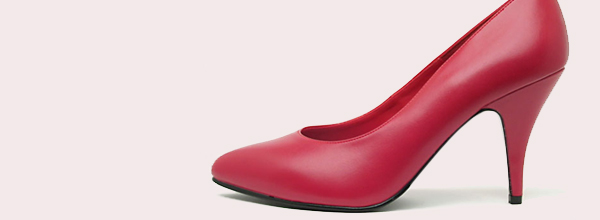Health differences of women – including hormones, heart disease and high heels!

There is lots of good news as far as our health is concerned. For one thing, we’re living for longer than ever. For another, women continue to live for longer, on average, than men. But that doesn’t mean you should be complacent. Taking care of yourself will ensure quality, not just quantity, of life.
Hormones – not so different in later life
The main female hormone, oestrogen, is essential for our fertility. But it also protects us against heart disease and thinning of the bones. After the menopause, your body’s natural levels of oestrogen drop for good. So once you’ve waved goodbye to that last pesky period, you need to pay more attention than ever to your health.Heart disease – not just a man’s affair
We tend to think of heart disease as mainly a male disease – and indeed, far more men die prematurely (under the age of 75) from it than women. But once you’ve been through the menopause, your risks increase substantially. Unfortunately, a recent survey suggests that even doctors tend to underestimate this risk. When faced with men and women both complaining of the same (possibly heart related) symptoms, doctors were more likely to investigate the man for heart disease. They were more likely to assume that the woman’s symptoms were due to stress and anxiety.So if you have chest pains, shortness of breath or swelling of the ankles, do see your doctor. And do ask – politley but firmly – whether heart disease could be at the root of your problems.
Osteoporosis – the silent epidemic
Osteoporosis, or thinning of the bones, affects huge numbers of older women. Being female, and being white, both increase your risks. So as a woman, it’s all the more important to:- Take regular weight-bearing exercise (brisk walking is perfect)
- Avoid smoking and excess alcohol
- Eat plenty of calcium (low fat dairy products and tinned fish with bones are excellent sources)
- See your GP if you notice you’ve lost height, or get pain in your back
Alcohol – not just a male conspiracy
Women really aren’t designed to cope with the same levels of alcohol intake as men. For a start, our bodies naturally contain more body fat and less body water. Because alcohol is only distributed in body water, it means that even if we weigh the same as a man, our body alcohol levels will be higher than that man’s if we drink the same amount.If you’re used to drinking, you may hardly feel the effects of six units of alcohol (2/3 of a bottle of wine or 3 double measures of spirit). But this level of alcohol is medically known as a ‘binge’, and can increase your risk of stroke, as well as accidents. Overall, you should stick to 2-3 units (1 ½ normal glasses of wine) a day, and not more than 14 units a week.
High heels and corsets – the price of vanity
You may have given up the unequal struggle with high heels as you leave the first flush of youth. But even a few years of indulgence can leave you prone to bunions and back strain in later life.So make sure you look after your feet extra well now, to make up for your youthful indulgences! Bunions are painful lumps at the base of your big toe. Wearing well-fitting shoes with rounded (rather than pointed) toes can relieve the pressure on this point. Regular visits to a chiropodist will help keep your feet in tip-top shape.
Corsets may be a fashion statement for some, but for many of us they’re a neat disguise for less-toned tummy muscles. Unfortunately, squashing your tummy can lead to all sorts of digestive disorders. If you suffer from heartburn or wind, you may be able to relieve your symptoms by avoiding corsets, as well as tight waistbands.



No comments: